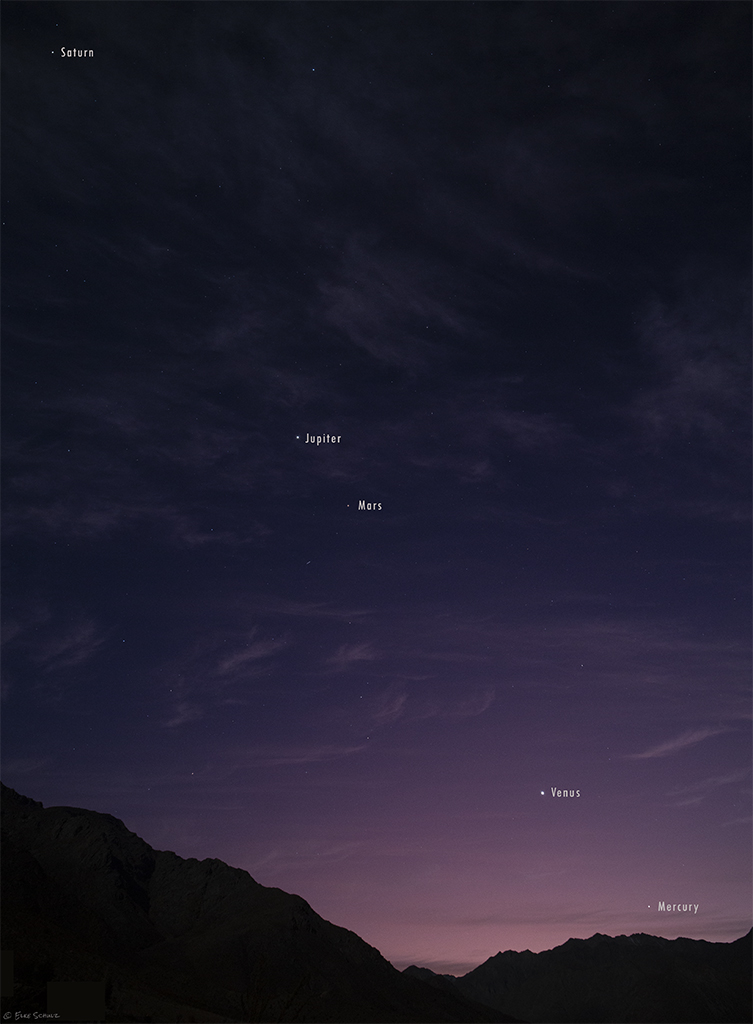2022年6月17日
Good Morning Planets from Chile
Image Credit & Copyright: Elke Schulz (Daniel Verschatse Observatory)
Explanation: On June 15, innermost planet Mercury had wandered about as far from the Sun as it ever gets in planet Earth’s sky. Near the eastern horizon just before sunrise it stands over distant Andes mountain peaks in this predawn snapshot from the valley of Rio Hurtado in Chile. June’s other morning planets are arrayed above it, as all the naked-eye planets of the Solar System stretch in a line along the ecliptic in the single wide-field view. Tilted toward the north, the Solar System’s ecliptic plane arcs steeply through southern hemisphere skies. Northern hemisphere early morning risers will see the lineup of planets along the ecliptic at a shallower angle tilting toward the south. From both hemispheres June’s beautiful morning planetary display finds the visible planets in order of their increasing distance from the Sun.
Tomorrow’s picture: light-weekend
智利清晨的五星联珠
影像提供与版权: Elke Schulz (Daniel Verschatse Observatory)
说明: 在6月15日那天,太阳系最内围的行星─水星,在地球天空游荡到离太阳最大张角的位置。在这幅摄于智利里奥乌尔塔多山谷的黎明前影像里,水星出现在日出前的东方地平线附近,低悬在远方的安第斯山峰上方。而其他6月可见的清晨行星,则出现在它的上方。在这片单曝光视野里,这些肉眼可见的太阳系行星,沿黄道面排列有如联珠。影像里,向北倾侧的太阳系黄道平面,陡峭地穿过南半球的天空。相较之下,北半球早起的人们,所见的行星排列则是以较小的角度向南倾斜。此外,从南北半球看出去,在6月之时,这些美丽清晨行星的排列顺序,忠实的反应它们与太阳渐增的距离。
明日的图片: light-weekend



